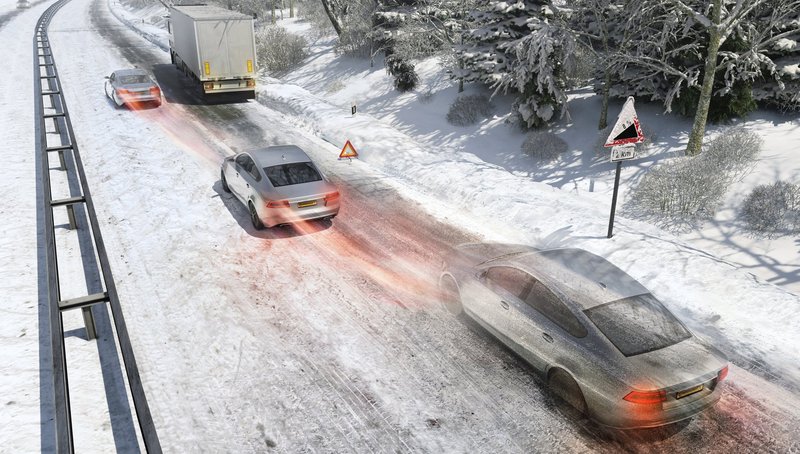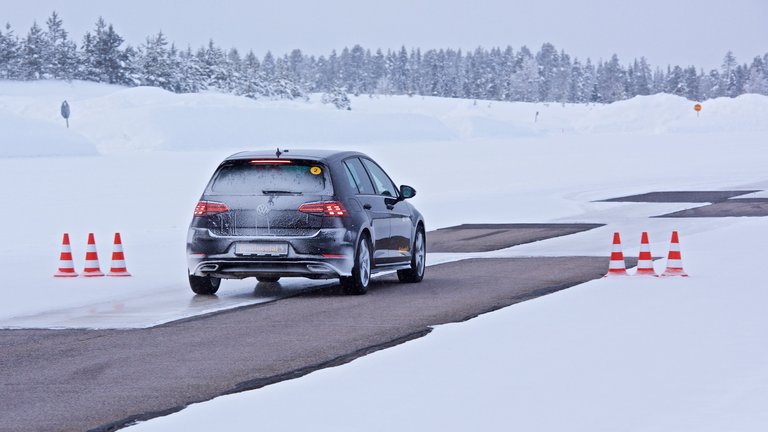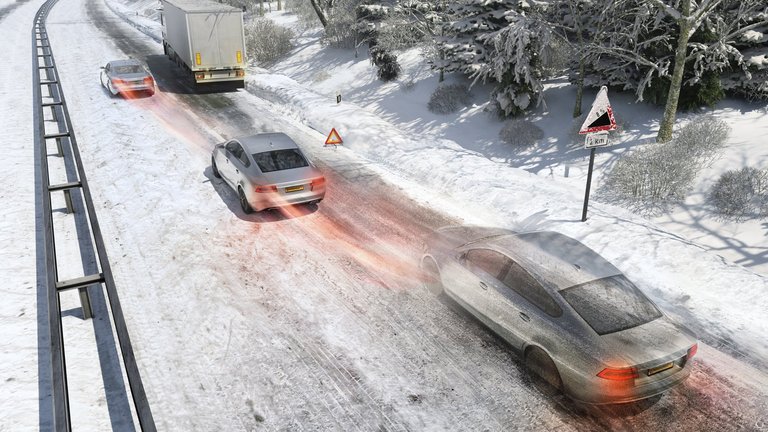Latest ABS-Generation from Continental: Optimum Brake Performance on Changing Road Conditions
- The third generation of the anti-lock braking system (ABS3) now responds with even greater speed and precision thanks to enhanced brake pressure control.
- Optimum brake performance is ensured thanks to the more adaptive controller design.
- Test drives conducted in Sweden on different road surfaces confirm that the performance potential of ABS3 is unleashed especially in critical situations such as when braking on roads with changing levels of grip.
Frankfurt am Main, Germany, March 5, 2018. Safe, controllable and optimum brake performance at all times – these are just some of the things that drivers want from their brake systems and hence result in increased automation. The technology company Continental has responded to this trend by developing a third-generation ABS (ABS3), and securing additional safety potential for achieving the long-term goal of Vision Zero – the vision of accident-free driving. This new generation adapts the brake pressure control with even greater speed and precision to suit changing road conditions. This means that the vehicle remains more maneuverable even when the brakes are applied sharply and optimum brake performance is ensured even under difficult circumstances. When the brakes are applied on road surfaces with different friction coefficients (μ-split situations) – for example, the lane on the right is covered in leaves, snow or gravel, while the lane in the middle has a much grippier surface – the ABS has to apply completely different levels of braking force to the wheels on the left and right to ensure maximum deceleration without compromising vehicle stability.
“To ensure optimum brake performance and maneuverability at all times even under ever-changing conditions, ABS3 takes these changes into account more quickly and robustly when controlling the wheel dynamics,” said Felix Bietenbeck, head of the Vehicle Dynamics business unit at Continental. This means that ABS3 responds even more quickly than the previous generation to abrupt changes in the level of road grip. A typical example is a car whose driver executes a full braking maneuver starting on a slippery road surface and ending on a grippier one – a scenario known as a “low-µ/high-µ jump.” This causes the lock-up pressure level to change. “Even if this change occurs abruptly, ABS3 can handle this more effectively than ABS2 thanks to its dynamic response and adaptive controller structure,” said Bietenbeck.
During winter test drives conducted in four different vehicles – each equipped with ABS2 or ABS3 and fitted with predecessor or current tire models – at the Continental test site in Arvidsjaur in Sweden, the benefits of ABS3 for both tire generations were clear to see. The planned test maneuvers included not only the μ-split and low-μ/high-μ jump, but also a lane change with the brakes applied.
ABS3 offers numerous benefits
ABS and ESC have made a key contribution to improving road safety and saving lives, which is why these systems are offered as standard by most manufacturers and today are generally considered as the most important step on the road toward safer driving. ESC in today's version is an extension of the ABS. The ABS prevents the wheels from locking when the driver is braking so that the vehicle remains capable of being steered. The ESC prevents the breakaway of the vehicle through targeted braking interventions by the electronics. Both systems complement each other to offer maximum safety and optimum driving stability within the physical limits. The generic concept behind ABS3 means that specific situations such as μ-split do not need to be detected and applied. These benefits mean that the third-generation ABS is much easier than ABS2 to apply in different vehicle models.
“Thanks to the ability of ABS3 to quickly respond to changes, drivers can retain control over their vehicles more effectively at the crucial moment and feel much safer as a result,” said Jochen Müller, function developer at Continental. “We are supporting recent trends, too – for example, if a driver decides to have tires with optimized rolling resistance fitted to their car for environmental reasons, the ABS must be able to respond perfectly to this change. This is something else that ABS3 is designed for.” This is made possible thanks to the adaptive controller in ABS3, which, using a model-based concept, more effectively allows for different tire behaviors. With ABS3, drivers who decide to have tires with optimized rolling resistance fitted to their car benefit from the fact that this allowance for changed tire behavior helps to improve the braking effect. “Most drivers probably aren’t necessarily aware of this interaction. But with ABS3, they can be confident that they have the right safety system for their new tires,” said Müller.
The tire transmits power between the vehicle and the road in all driving situations. The ABS anti-lock braking system is representative for vehicle control systems. The ABS ensures optimum slip even during emergency braking, which means that the maximum possible braking force is transferred from the tire to the road surface (µ-slip curve). Despite this, the vehicle remains maneuverable because the wheels are prevented from locking up. This control procedure is extremely demanding because it has to occur very dynamically. In addition to the manageability and steerability of the vehicle during emergency situations, the ABS must ensure, especially in the longitudinal dynamics, that the friction potential of the tire is optimally exhausted. ABS3 pays particular attention to the fact that the interaction between the tires and road surface is influenced by a whole range of factors, some of which – road friction, temperature, vehicle load and speed – change all the time. But, as drivers are all too aware from the annual tire tests, the quality of the tire itself also plays a key role.

Sören Pinkow
Media Spokesperson Autonomous Mobility and Commercial Vehicles
Continental Automotive


